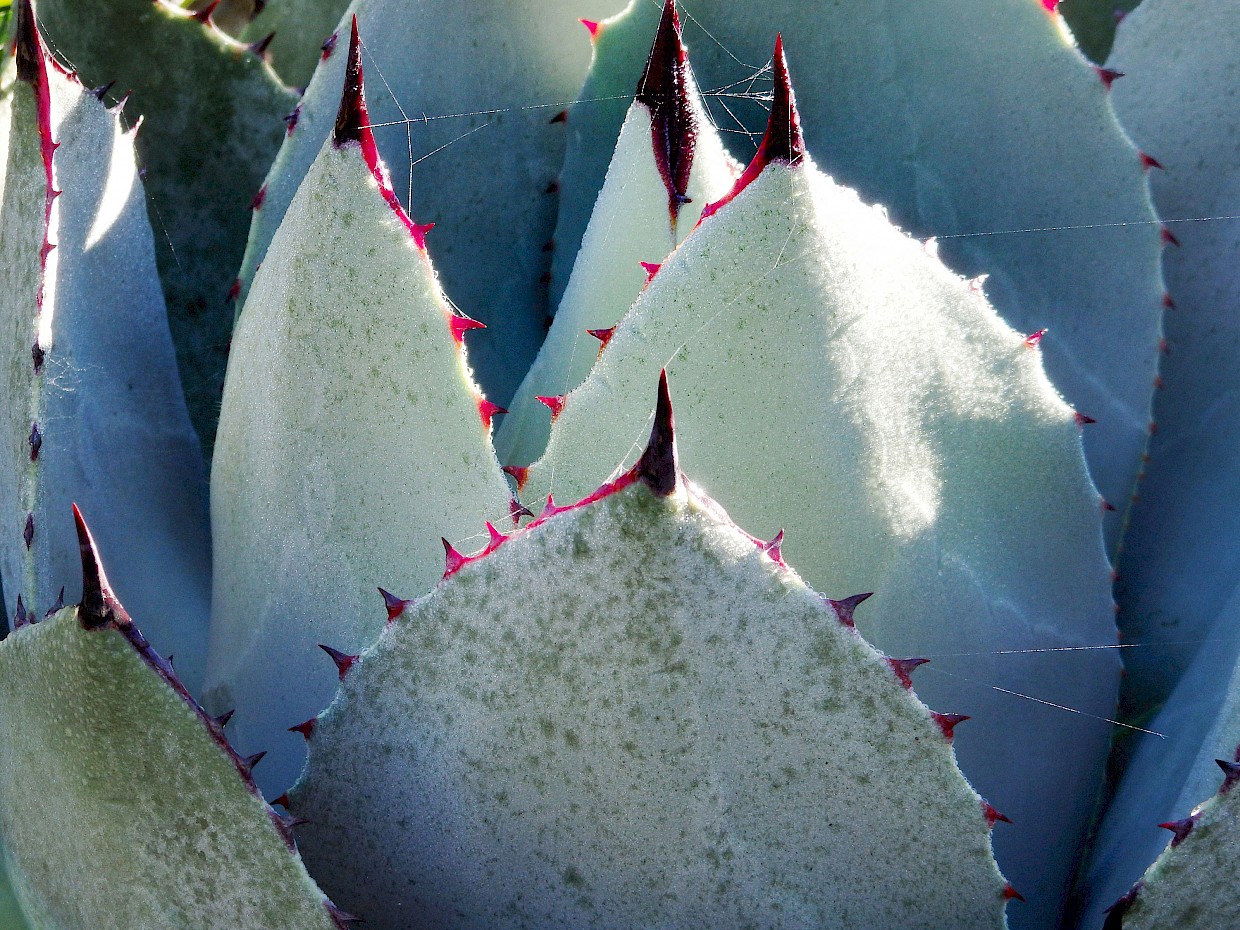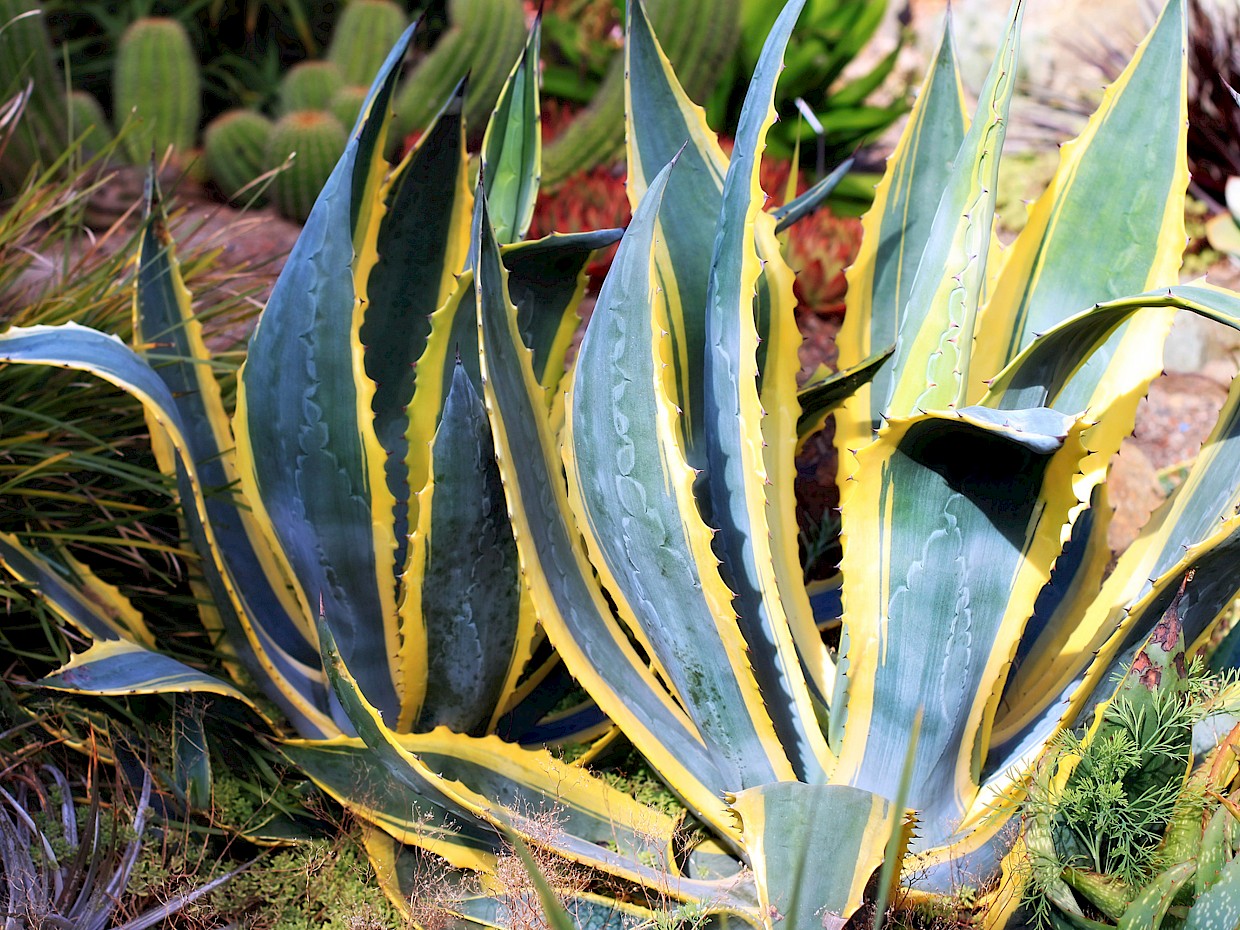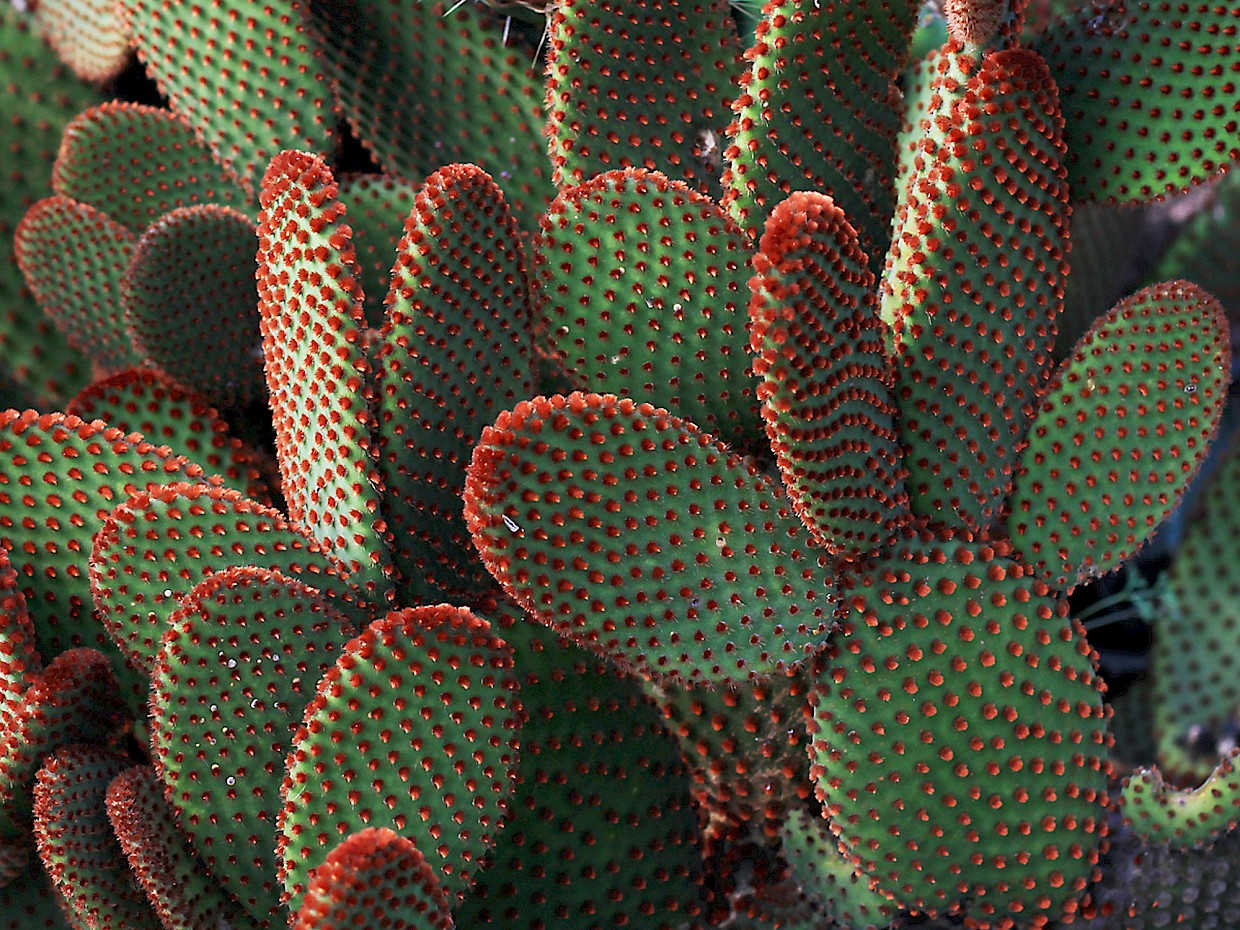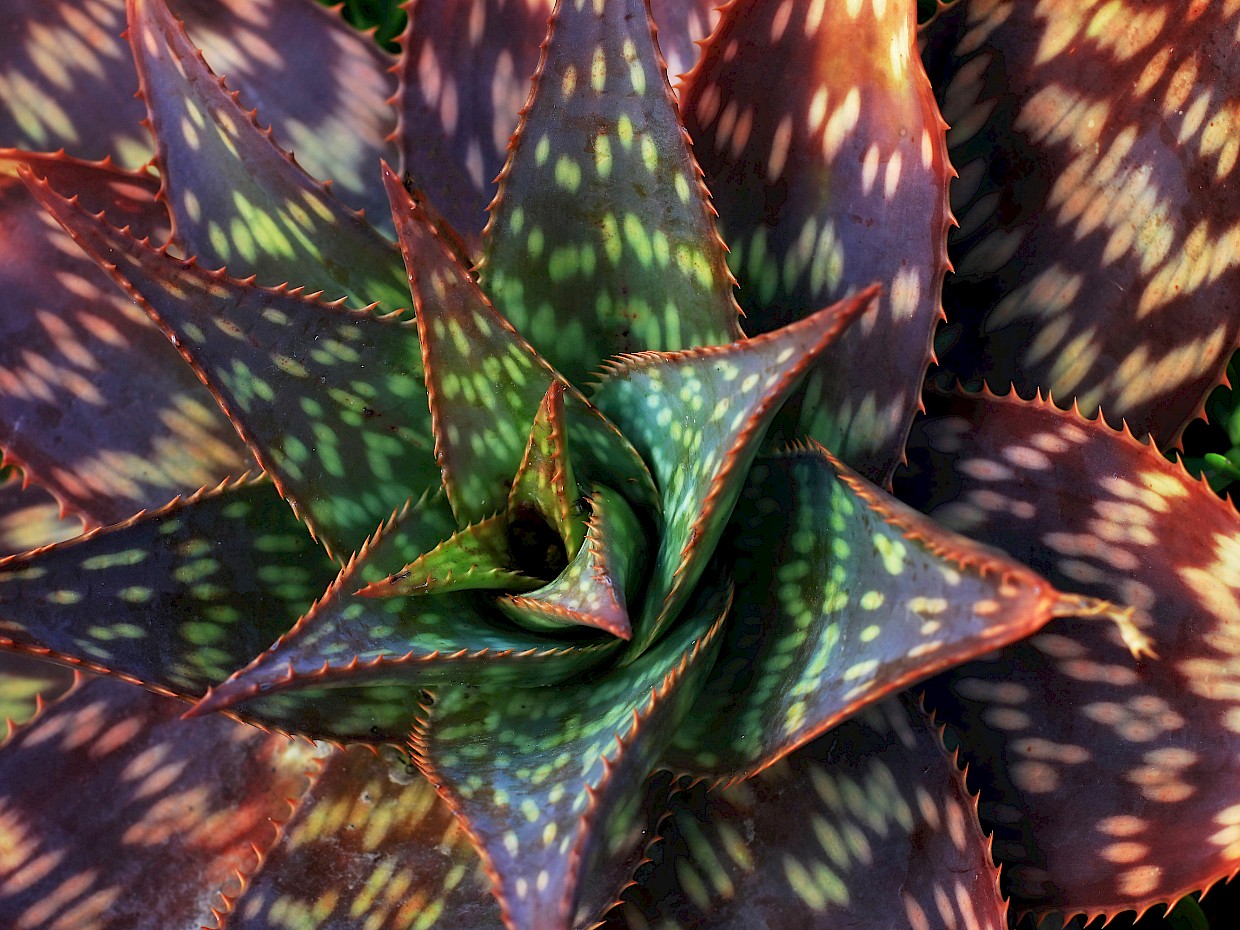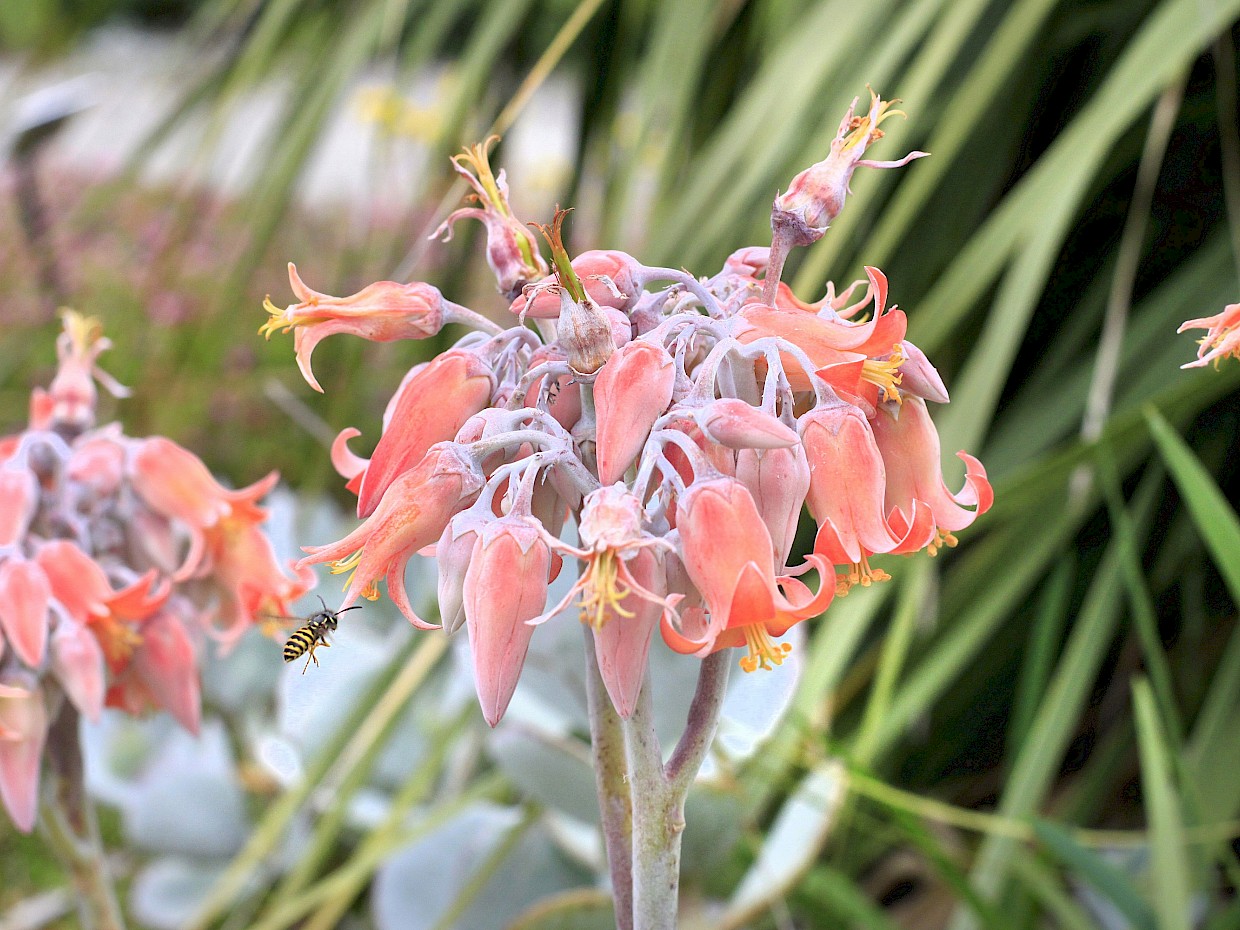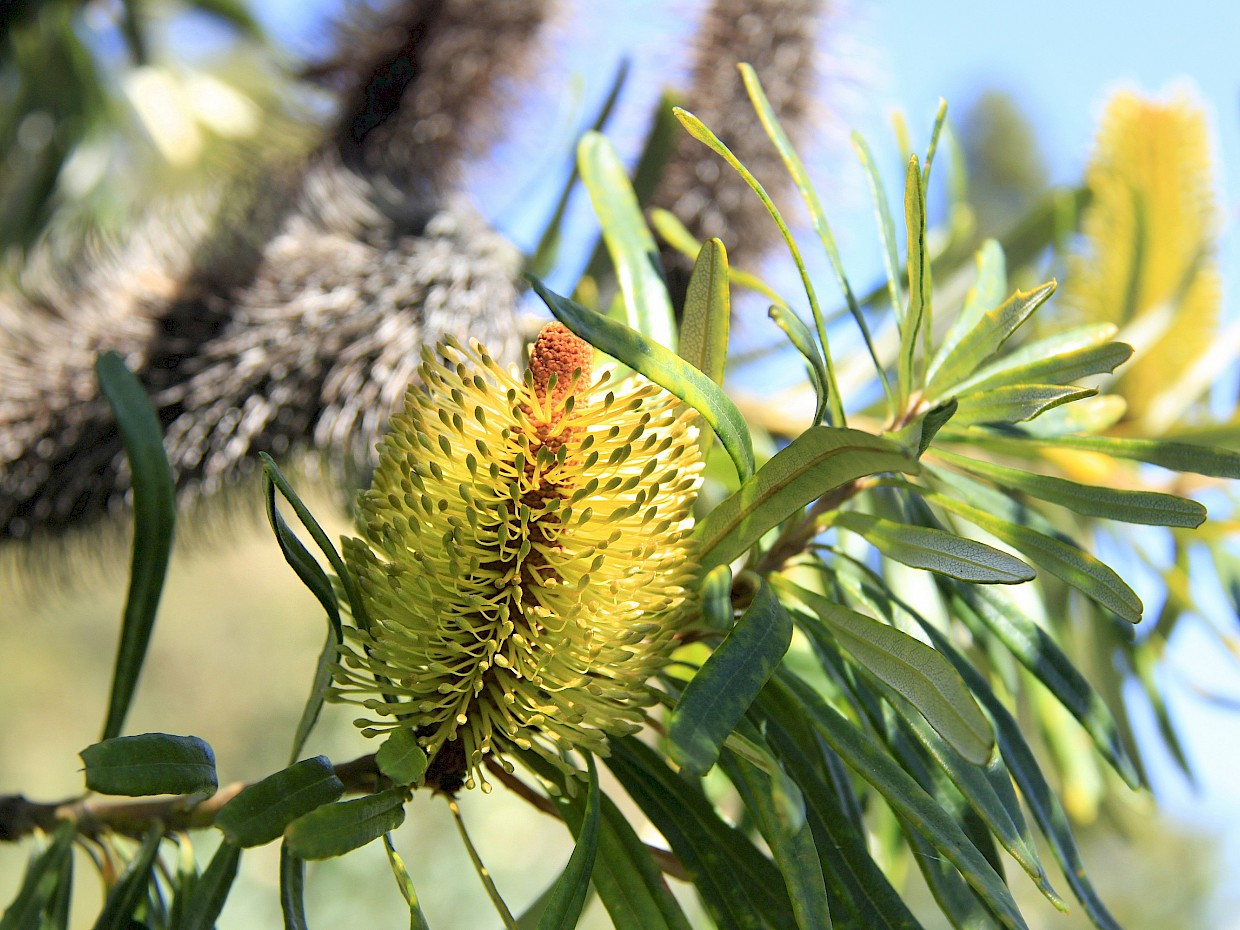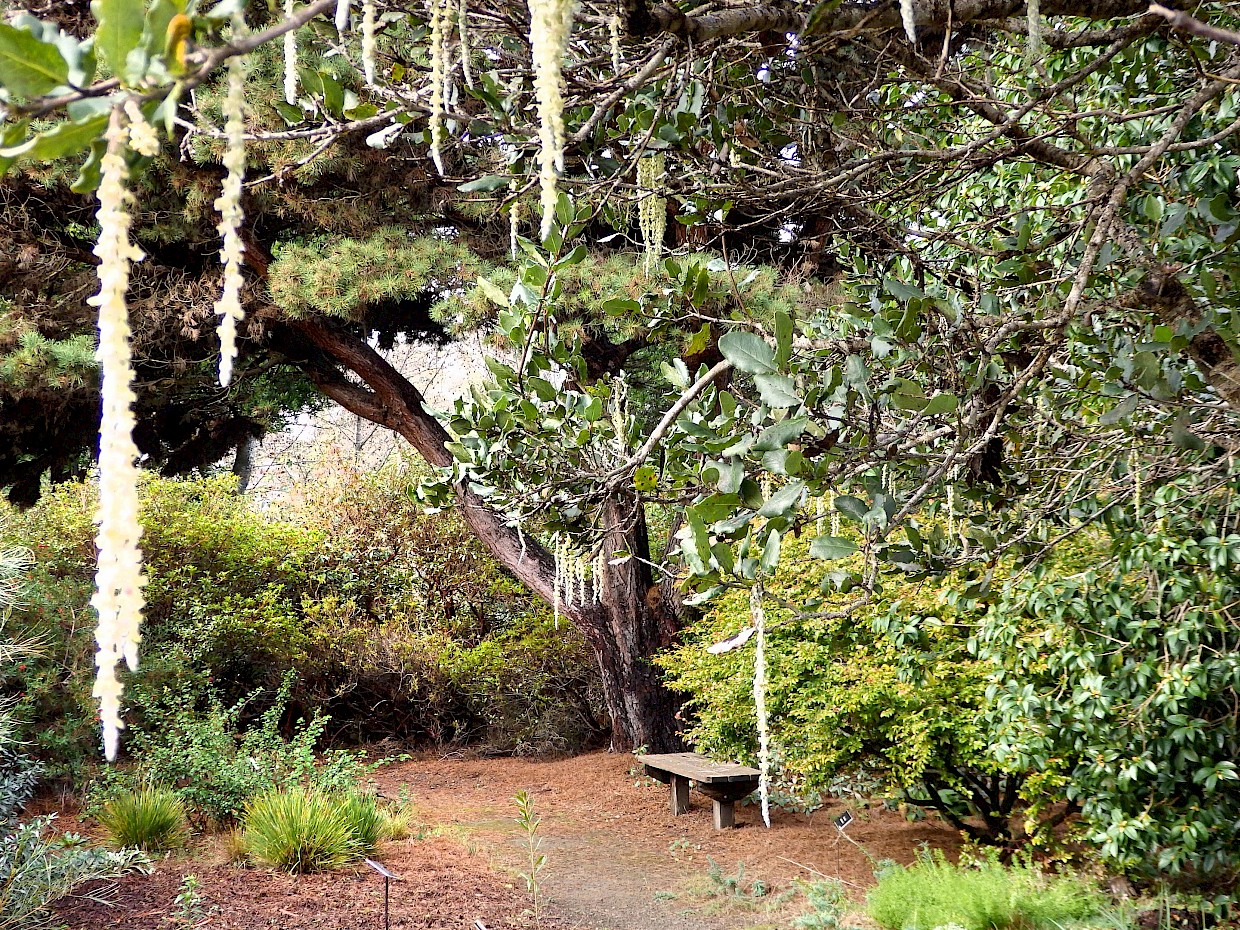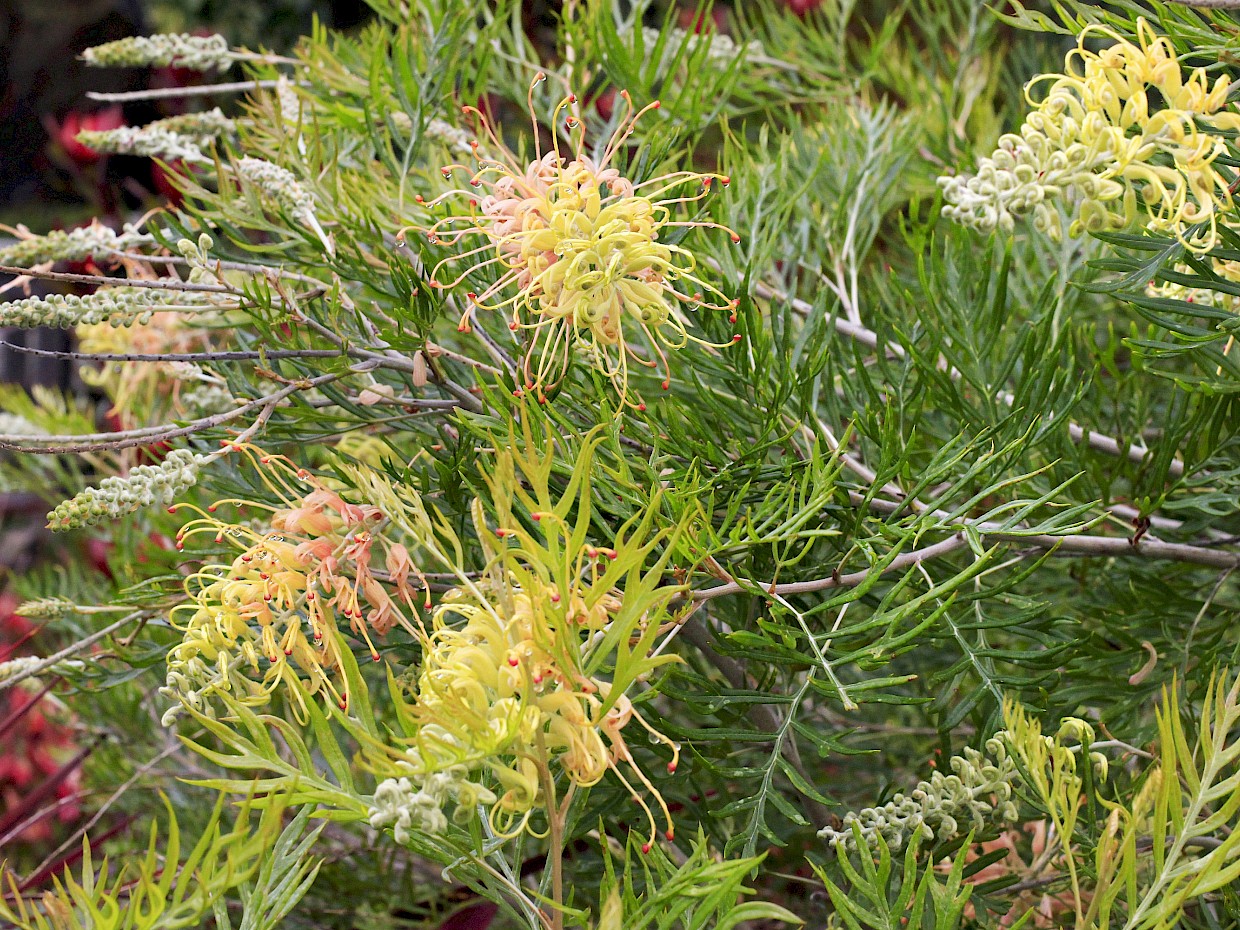Succulent & Mediterranean Garden
Typical bloom time: May through August
The MCBG Succulent Garden began in the early 1980's with a donation of materials and plants from Marlene Rainman. It was later expanded with donations from Betty Paddock, Rella of Simply Succulent, and various botanical gardens in California. Very well-draining soil for this collection was brought in to ensure success in our wet winter environment. The majority of the plants are from highland Mexico and South Africa, regions that have climates that are more like our own in terms of rainfall and temperatures. While there are over 150 different species and cultivars planted in the Succulent Garden, our collection represents only a tiny portion of the vast and wonderful world of succulents.
Plants known as succulents, literally "juicy" plants, are those which due to climate or other conditions, have evolved to store ample moisture for survival in their roots, bodies, branches or leaves. These plants exhibit small, leathery, thick leaves that may be white-colored, waxy, or hairy. The variety of shapes and sizes alone (from thumbnail to towering heights) is enough to intrigue the plant lover, but all succulents also bloom.
There are over 40,000 species of succulents worldwide, occurring in over 50 different plant families, most of which have non-succulent relatives. For example, the lily family (Liliaceae) includes aloes, from large tree form to shrubby and dwarf varieties, as well as the smaller haworthias and gasterias. Among the 8,000 spurges, of which the best known is the Christmas Poinsettia, there are several thousand succulent members of the genus Euphorbia ranging from delightful miniatures to 80 foot giants. There are around 3,000 ice plants (in the family Aizoaceae), all native to South Africa, which include familiar groundcovers as well as the living stones (Lithops), and other intriguing mimicry plants. The Crassulaceae is a very large group including sedums, houseleeks, hens and chicks and many others. There are also succulents related to melons, daisies, figs, milkweeds, geraniums and grapes. Then there are many strange succulents from Madagascar (including the family Didiereaceae) which are unique to that island.
Cacti (Cactaceae) are the only plant family all of whose approximately 3000 members are succulents, and they are all natives of the New World, from Canada to Patagonia, with the greatest number of species found in Mexico and the Andean countries. Cacti range from Arizona giants to tiny miniatures. They also include thin, spineless ones dangling from tropical trees. They are a variety of shapes and colors and flaunt some of the most magnificent and largest flowers on earth, up to 14 inches across!
Vertical leaf orientation reduces the surface area of the leaf exposed to the sun during the hottest part of the day. Waxy coatings help reduce water loss through the epidermis. Light-colored coatings or hairs on stems reflect light and reduce the overall temperature of the plant (like the difference between wearing a white and a black T-shirt on a sunny day). Hairs on the undersides of leaves trap a boundary layer of still, relatively moist air. Thick leaves reduce the surface area that is exposed to the sun. Tiny or absent leaves reduce the amount of material exposed to dry air and hot sun. For example, cacti carry on photosynthesis in succulent, green stems, instead of in leaves. Stomata, openings through which water vapor escapes, are located on the undersides of leaves away from direct sunlight.
Next: Vegetable Garden & Orchard »
« Previous: Perennial Garden

